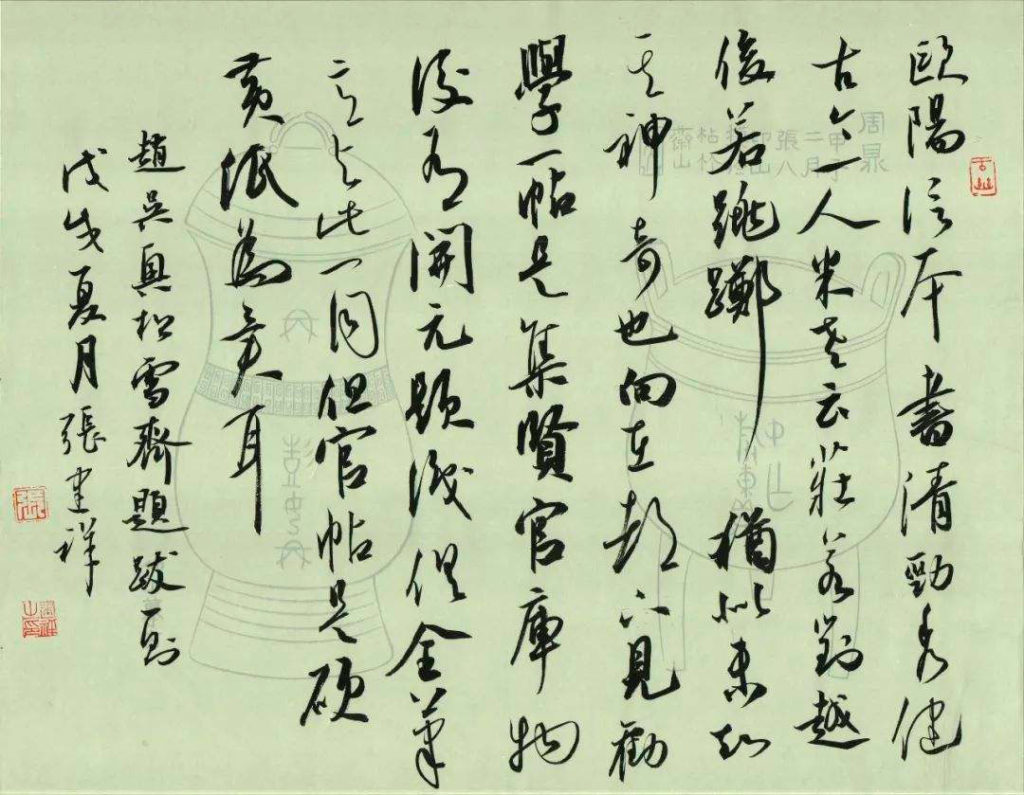How to master a Xingshu style writing? Nowadays more and more people get to like Xingshu calligraphy, this calligraphic style has become the most popular. Therefore, it becomes apparent that it has a certain extraordinary charm. So how do you succeed in the Xingshu style? Calligraphy of this style is unique in its softness of lines and fluency, this is why it is widely used today. So how do you learn to write well in the Xingshu style?
Some key points:
1. Get rid of Kaishu laws
For kaishu practitioners, I usually say that at the beginning of writing a hieroglyphic line, the acute angle should be hidden, at the pivot point there should be a change in the movement of the brush up and down, and when writing a hook-shaped line, you should first stop completing the line, and then continue again, and so on. When writing Xingshu, these moments should be avoided and, if possible, forgotten at all. So how can you teach beautiful Xinshu writing? For example, if we compare Kaishu with Wushu exercises, then Sinshu is free sparring. You cannot start every movement from the very beginning, as fluency is most valued. Xingshu written with a hard pen is about fluency and smoothness, and the shape of the hieroglyph should roughly correspond to the standard – this is what you call a good Xingshu style.
2. Study hard cursive workbooks
To study the Xingshu style well, it is necessary to undergo a special training with cursive workbooks in order to master the style and rules of writing hieroglyphs. When studying calligraphy, you need to find a good calligraphic cursive workbook. For example, “Stela Danba” by Zhao Mengfu is a good calligraphic workbook, while writing hieroglyphs can be practiced either with a brush or by copying a smaller script, and you can also practice writing hieroglyphs with a hard pen. You can also practice using hard pen with scripts by calligraphy masters such as Lu Zhongnan, Ding Yongkang, Wu Yusheng. The simultaneous practice of hieroglyphs with a brush and a hard pen has a huge advantage for the Xingshu style; such combination of tools is complementary. Hieroglyphs made with a brush are a subtle and careful striving for perfection, while hieroglyphs made with a hard pen are about honing the skill, from large to small hieroglyphs, then again from small to large ones. This method is very useful in reinforcing the knowledge of calligraphy.
How can you master the Xinghu style? The practice of calligraphy is nothing more than two methods: copying and reading the cursive, and reading the hieroglyphs, which is very important in Xingshu. Reading words can help you copy and learn hieroglyphs even better. This is one of the basic principles, which should never be ignored.
3. Be a diligent student
At the very beginning of studying the Xingshu style, there is always a period of adaptation, when, with shapeless hieroglyphs, a feeling of awkwardness comes, but there is nothing to worry about. You can practice writing in your notebook and, while making notes in your diary, you can also use the Xingshu style to see for yourself how you get to write a particular hieroglyph. Mastery comes from experience, from one hieroglyph to a phrase, from several hieroglyphs to a whole composition; the laws of Xingshu are gradually mastered, and your own style is gradually formed. It is necessary to master new things from different points of view, for example, to look at the hieroglyphs made by famous people, on trade signs, the hieroglyphs of your teachers and even classmates. If you observe carefully, you can find other people’s well-written hieroglyphs, and if you learn them, they will become your hieroglyphs. All the outlined above was about how to learn the calligraphic style of Xingshu. Now we have some simple understanding, so when practicing calligraphy you need to pay attention to these aspects.

